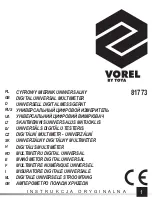
35
MINIATURE 2-CHANNEL STATISTICAL MULTIPLEXOR
4.22 RTS Control Pass Screen
View the current status of the RTS-to-DCD control function used on this sub-
channel, and select, if desired, a new status.
The Multiplexor stand-alone and card models can transfer end-to-end (in both
directions) one RS-232 interface control signal per channel; when this function
is enabled, the condition of the RTS line is copied to the remote DCD line.
NOTES:
1. You must always select the same mode for both Multiplexors
connected in a link.
2. When you select OFF, the DCD line is always active (DCD on).
3. When you select ON, the remote DCD line follows the local RTS line.
In case synchronization is lost, the DCD lines switches to the not-active
state (DCD OFF). If your command terminal requires DCD to be active in
order to communicate, you must establish communication with the
remote Multiplexor before starting a configuration session.
Screen selections are as follows:
Code numbers 1 and 2 list the available selections of the RTS-to-DCD transfer
status: on or off.
Code Q is used to return to the SUB-CHANNEL CONFIGURATION screen.
The CURRENT STATE line shows the current status of the RTS-to-DCD
transfer.
To change the status of the RTS-to-DCD transfer for this sub-channel, type the
appropriate code number. The new selection appears in the CURRENT STATE
line.
Type Q to return to the SUB-CHANNEL CONFIGURATION screen.
4.23 Diagnostics Menu
Select the control screens for the various test loops that can be activated from the
local Multiplexor, for diagnostic purposes.
See Chapter 6
for a description of the
test loops.
Code numbers 1 through 3 are used to select the desired test loop type: local
loops, remote loops and modem loops.
















































